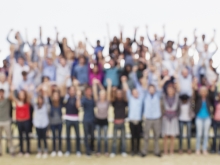
Turin
The first capital of united Italy in 1861, Turin went on to become one of the main economic and industrial cities in the country in the 20th century thanks to its car industry. The city is the home of Fiat, which also owns Lancia and Alfa Romeo, and Iveco trucks.
Though vehicle production and parts suppliers are still an important part of the city’s economy, various crises since the 80s have contributed to a decline in the sector. Industrial automation, aeronautical parts, IT and satellite systems have gained in importance, while the food and drink industry is also a large employer together with textiles, banking and insurance and the publishing sector. The overall drive now is to boost Turin’s cultural profile and tourism, while transforming its economy towards a more high-tech and knowledge-based one. The city is home to a large number of research and development activities—and the highest proportion of private sector spending on R&D in Italy.
However, tourism is also part of the local economy. Set against the backdrop of the Alps, the city has numerous palaces, museums and art galleries for its visitors. National and regional parks are nearby, along with leading ski resorts. Turin hosted the 2006 Winter Olympics, using the nearby slopes of Sestriere, while the city’s other claim to sporting fame is as the home of Juventus football club. Surrounded by a celebrated wine-growing region, Turin is also a gastronomic capital and the birthplace of the Slow Food movement.
The city has a broad range of markets - 42 open-air and 6 covered markets, including Porta Palazzo, the largest open-air market in Europe. But the markets have to face the same transformation challenges undergone by the city itself, thus requiring a participative effort from all the local actors and learning lessons from European partners
SOME RELATED NETWORKS
My Generation at Work
CO4CITIES
News
News from our cities and networks – 24 September 2021
Article
Governing commons, is it even possible?
Article
Nine solutions for more vibrant, productive cities
News
News from our networks – 30 April 2021
News







